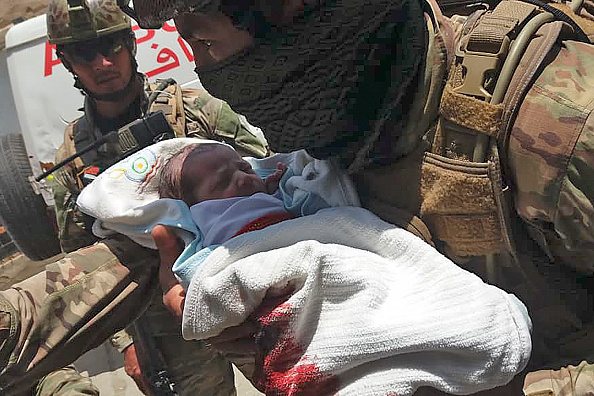CONTINUED VIOLENCE FROM TALIBAN IN SPITE OF DEAL
During the negotiations and eventual signing of the deal in Doha, it was evident that it would not lead to the reduction of violence. The fact that the Afghan government did not take part in negotiations, nor sign the deal meant that two possible scenarios were likely to happen. First and foremost, as the government did not agree to the deal, it had no obligation to reduce its crackdown on the Taliban, especially if the latter chose to carry on with its attacks in spite of its commitments it promised to the United States. Second, the Taliban could exploit the end of its war with the US to refocus all its energy towards attacking the government. Both these scenarios were likely to happen because the deal never explicitly obligated the Taliban to stop its attacks; rather the US expected the group to reduce violence after the signing of the deal. The circumstances of the deal’s signing did display many holes early on, however there is little evidence to show that the deal might have worked in the first place. Shortly after the deal was signed, three anonymous American officials spoke to NBC news stating that the US government had gathered intelligence indicating that the Taliban didn’t have any intention to honour the terms put forward in the deal.
These warnings turned out to be true. Not only did the Taliban continue its operations as if no deal was signed, it actually intensified its attacks throughout the country. The supposed glimmer of hope that the Trump administration brought to the war torn country simmered in a matter of days. Both American and Afghan officials cite a surge in violence from the Taliban’s part, as a recent report from the Office of the Special Inspector General for Afghanistan Reconstruction stated that Taliban attacks on government forces were “above seasonal norms” last March. While the Afghan Security Council stated that since March 1, the Taliban have been carrying out an average of 55 attacks a day.

A NEW BLAME GAME
The presence of ISIS cells in Afghanistan has made peace the prospects of peace efforts more complex. ISIS insurgents are neither allied with the Taliban or the government, and they have opposed any peace efforts between both parties. In recent months, several devastating attacks on civilians and government facilities have put forward a new blame game in Afghanistan. While ISIS has claimed responsibility for several of the attacks, the Afghan government has repeatedly placed the blame on the Taliban, which then denies all involvement in such attacks. As a result, Afghanistan has been living through a perpetual blame game, whereby a terrorist attack happens which ISIS claims responsibility for, then the government blames the Taliban for said attack to which the Taliban washes its hands from. On March 6, days after the deal was signed ISIS claimed responsibility for a series of explosions in western Kabul, which killed 32 civilians and wounding 80 others. Quickly after the attack, the Taliban issued a statement denying all responsibility for it. May 12, 2020 was one of the bloodiest days in modern Afghan history, as two deadly attacks took place in the country. The first was an attack conducted by armed gunmen who targeted a maternity hospital in Kabul killing more than 15 people including two newborn babies. That same day, a funeral procession for a police officer Nangarhar was also targeted as 25 other people lost their lives at the hands of insurgents. Again ISIS claimed responsibility for the attacks, while the Afghan government pointed the finger at the Taliban, and the Taliban once again denied. This time American officials, such as Zalmay Khalilzad, the chief negotiator of the Afghan peace deal backed the Taliban’s claims of innocence as they stated that evidence pointed towards ISIS as the responsible culprit. Nevertheless, May 12 was an important turning point since Afghan president Ashraf Ghani vowed to resume armed offensive against the Taliban, once again dampening the possibility of a viable peace deal between both entities.
A GLIMMER OF HOPE ON THE HORIZON?
In spite of heated tensions between the Afghan government and the Taliban, there have been a series of prisoner exchanges. This is an important development as a core part of the deal called on the Afghan government to release 5,000 Taliban prisoners, while the Taliban had to release 1,000 government soldiers who are held captive. Thus far, the government has released 2,000 Taliban fighters, while the group for its part freed 347 government fighters. Moreover, as of the writing of this piece, representatives from the Taliban are currently in Kabul as they are holding discussions with the government on further prisoner releases. This is also a positive outcome as far as the Trump administration is concerned, as Washington has slowly been withdrawing troops out of Afghanistan. As it stands, 13,000 US soldiers have started to move out of the war torn country, and more are expected to go back home provided that the Taliban abides by the terms set forth in the deal. While the Trump administration will undoubtedly use this as a victory to bolster his 2020 re-election campaign, the unpredictability of Afghanistan has shown that early celebrations can quickly end up becoming false alarms.







